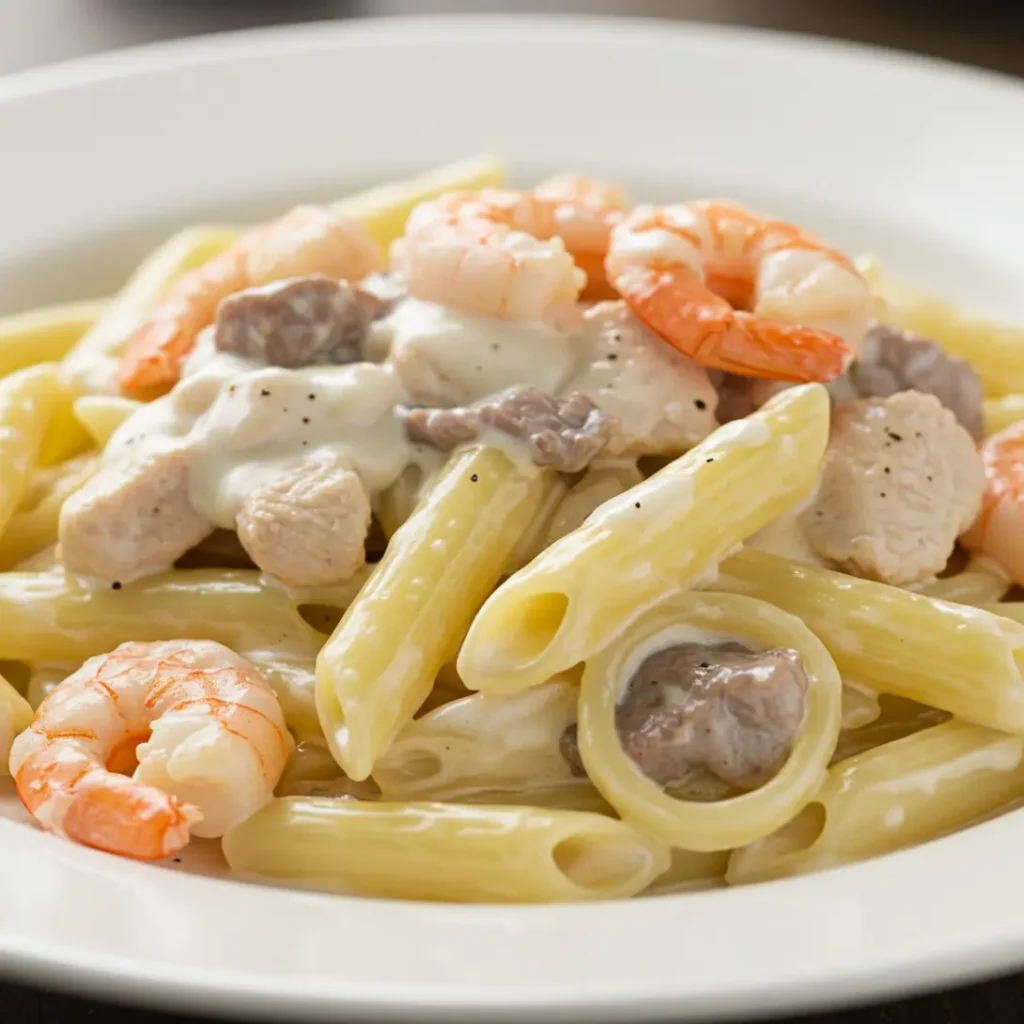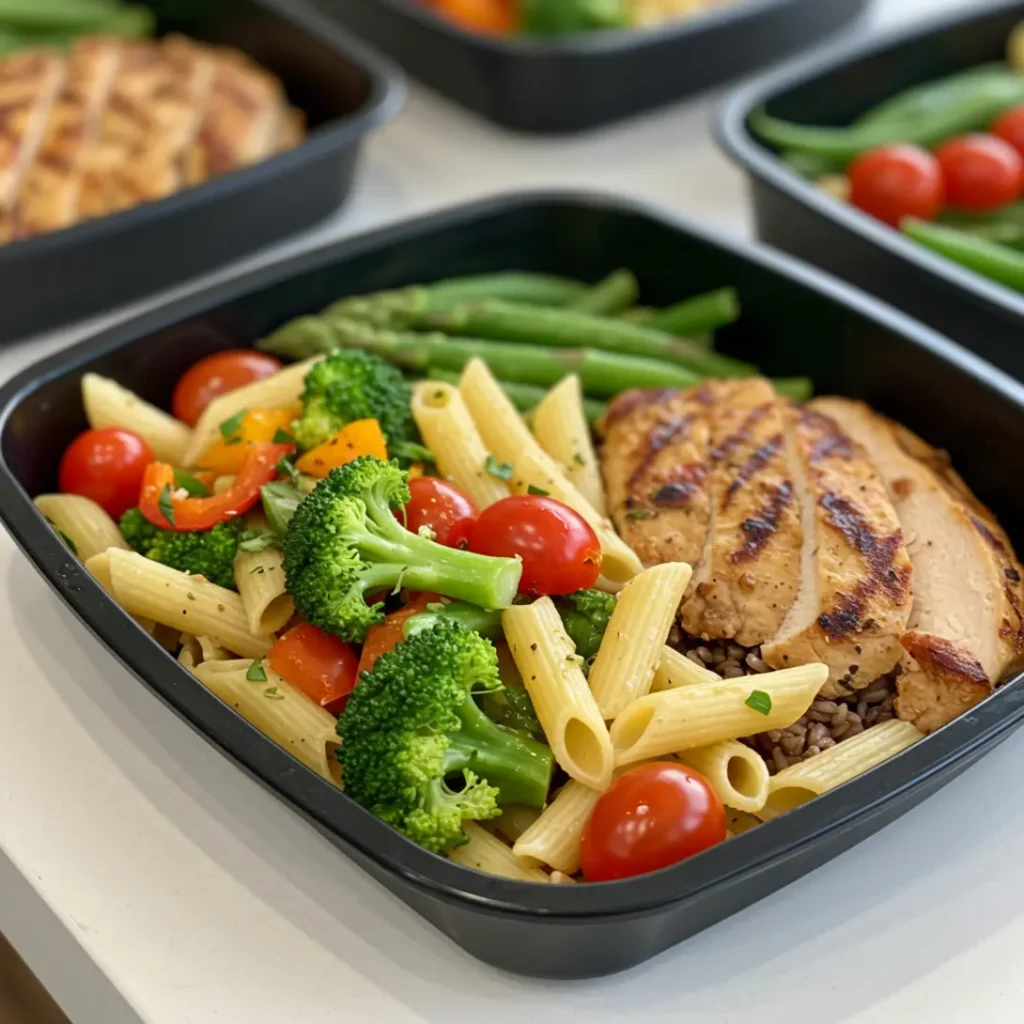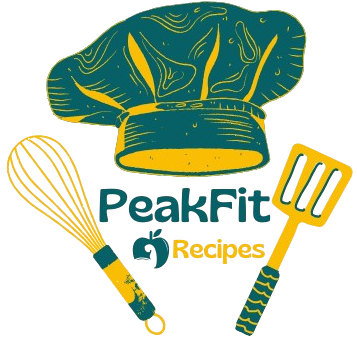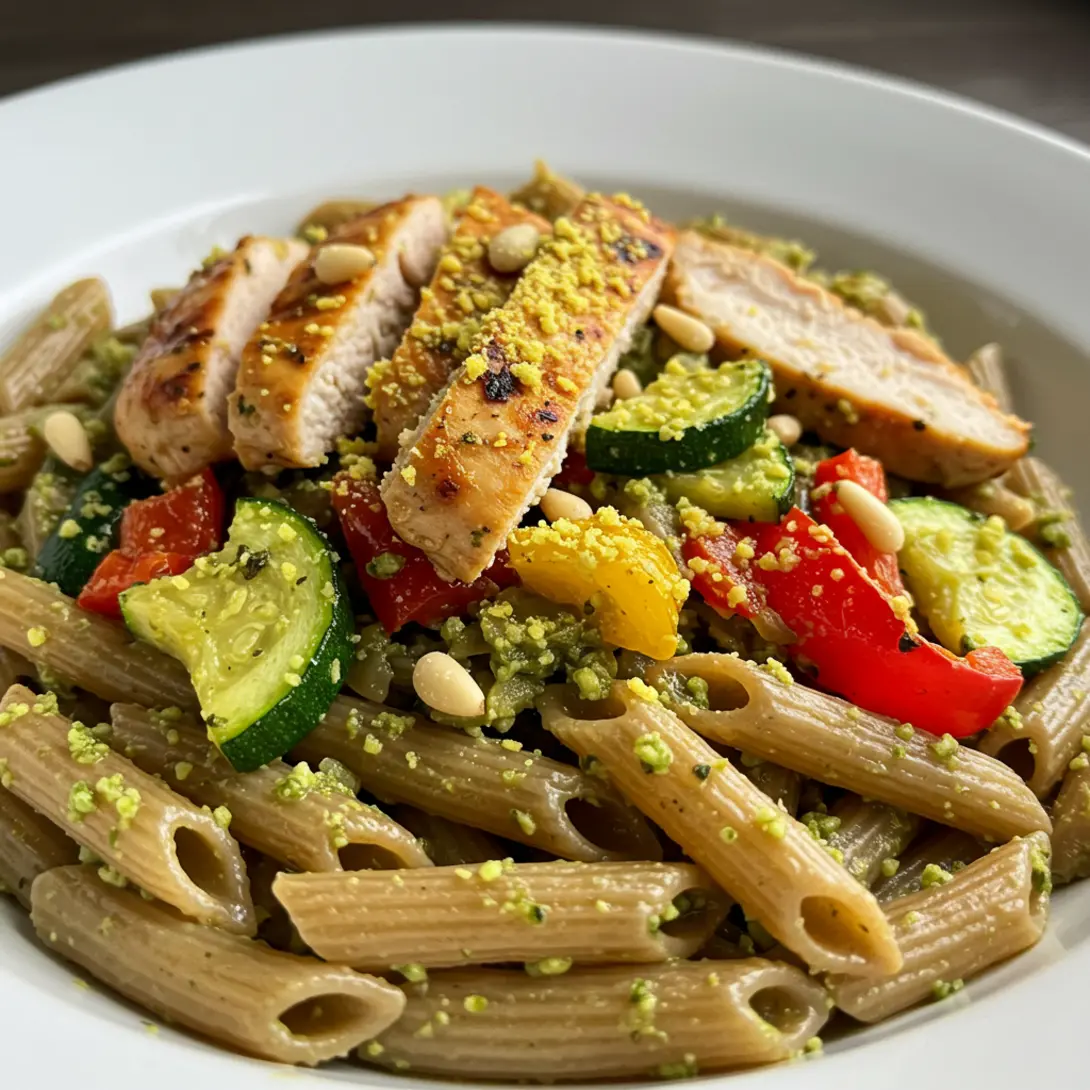Introduction : high protein pasta recipe
High protein pasta recipe is more than just a fitness trend—it’s a smart, sustainable way to nourish your body without giving up your favorite comfort food.
I used to believe that eating healthy meant sacrificing flavor or spending hours prepping complicated meals. But then, life changed—two kids, a full-time job, and an aching need to feel strong again. That’s when I stumbled upon the magic of high-protein pasta. And let me tell you, it was a total game-changer.
I’m Carla—a lifelong athlete, mom of two, and passionate home cook. My journey with high-protein meals began out of necessity but turned into a love affair with easy, empowering food that makes me feel energized every single day.
Why High Protein Pasta?
The first time I made a high protein pasta recipe, I was skeptical. Could something this simple really make a difference in my energy, my recovery, my mindset?
Yes. Absolutely, yes.
Protein is essential for building and repairing muscles, stabilizing blood sugar, and keeping you full longer. And when it’s wrapped in the comfort of a warm bowl of pasta? That’s self-care at its tastiest.
The Ultimate 5 Secrets to Perfect High Protein Pasta
1. Choose the Right Pasta Base
There’s a whole world beyond traditional wheat noodles. If you’re aiming for higher protein without losing texture or taste, try:
- Chickpea pasta – Around 13–15g protein per serving
- Lentil pasta – Slightly earthier flavor, packed with fiber
- Quinoa-blend pasta – Great texture and extra amino acids
- Edamame or black bean pasta – Bold flavor, big protein boost
These alternatives are stocked in most grocery stores now. I personally love lentil pasta for its chew and mild flavor—my kids can’t even tell it’s not regular spaghetti!
2. Add Lean, Powerful Proteins
This is where the magic happens. Think of your pasta as a canvas. What you add turns it from a side dish to a main event.
Some of my favorite protein-packed additions:
- Grilled chicken breast (25g protein per 3 oz)
- Ground turkey or lean beef
- Shrimp – Quick to cook and perfect for summer
- Tofu or tempeh for a plant-based punch
- Eggs – Stirred in hot for a creamy, carbonara-style twist
3. Don’t Forget the Legumes
One secret weapon I use weekly: legumes. Beans, peas, and lentils add plant-based protein and heartiness.
Try this simple trick:
- Drain and rinse canned chickpeas.
- Sauté with olive oil, garlic, and a pinch of smoked paprika.
- Toss into your pasta dish for texture, fiber, and about 7g of protein per half-cup.
4. Cheese… But Choose Wisely
Yes, you can still have cheese—hallelujah! But instead of loading your plate with mozzarella, go for:
- Cottage cheese – 14g protein per ½ cup and melts beautifully
- Parmesan – Adds sharpness with less needed
- Ricotta – Light, fluffy, and protein-rich
My favorite? Mixing cottage cheese into hot pasta to create a creamy, luxurious base without heavy cream.
Image Placeholder: Close-up of Ricotta Mixed Pasta
Alt Text: creamy high protein pasta recipe with ricotta cheese
Caption: Ricotta adds creaminess without the guilt
5. Sneak in Protein-Rich Veggies
Yes, vegetables can have protein too! Here are a few high-protein greens to fold into your dish:
- Spinach – Wilts quickly and adds iron
- Broccoli – Crunchy and satisfying
- Green peas – 5g protein per ½ cup
- Brussels sprouts – Roasted for texture and taste
Quick tip: Sauté your veggies in the same pan you cooked your protein. It builds flavor and saves dishes.

The Recipe: Carla’s 20-Minute High Protein Pasta
Here’s one of my favorite go-to versions—quick enough for a weeknight, powerful enough to fuel a workout.
Ingredients (Serves 2)
- 1 cup cooked lentil pasta
- 1 grilled chicken breast, sliced
- ½ cup steamed broccoli
- ¼ cup cottage cheese
- 2 tbsp grated parmesan
- 1 tsp olive oil
- 1 garlic clove, minced
- Salt and pepper to taste
- Optional: red pepper flakes, lemon zest
Instructions
- Cook lentil pasta according to package directions.
- In a skillet, heat olive oil. Add garlic and sauté 30 seconds.
- Add broccoli, season with salt and pepper, and cook 2–3 minutes.
- Stir in cottage cheese and parmesan until melted and creamy.
- Toss in the cooked pasta and sliced chicken.
- Sprinkle red pepper flakes or lemon zest before serving.
Total time? Under 20 minutes.
High protein pasta is perfect for meal prep. Make a double batch and divide it into containers for grab-and-go lunches. It holds up well, especially with thicker sauces or mixed with roasted veggies. Add a drizzle of olive oil before storing to keep it moist.
Kid-Approved Variations:high protein pasta recipe
My little ones are picky, but they love my “pizza pasta” version—lentil penne, turkey pepperoni, a sprinkle of mozzarella, and marinara sauce. For younger kids, I mash the beans slightly into the sauce. They don’t even notice the added nutrition.
Sauces that Boost Protein:high protein pasta recipe
Skip the store-bought jars! Try:
- Greek yogurt Alfredo – Creamy and packed with protein
- Hummus-based sauces – Tangy and smooth
- Nut-based pesto – Almonds or cashews for added protein
These add flavor and function.
Budget-Friendly Protein Boosts
Eating well doesn’t have to cost a fortune. Canned tuna, frozen edamame, and bulk lentils are high-protein, low-cost staples. I always keep a bag of frozen peas on hand—they’re cheap and packed with plant-based protein.
How to Make it Gluten-Free
Most high protein pastas are naturally gluten-free—chickpea, lentil, and quinoa blends don’t contain wheat. Just double-check the label if you’re celiac. And use gluten-free soy sauce or tamari if making Asian-inspired versions.

FAQ: high protein pasta recipe
How to make pasta more high in protein?
Start with high-protein pasta like chickpea or lentil varieties. Then add lean meats, legumes, cottage cheese, and protein-rich vegetables.
What pasta is the highest in protein?
Edamame pasta and chickpea pasta are among the highest, offering 13–20g protein per serving. Lentil pasta is also a top contender.
Is high protein pasta good for you?
Yes! It supports muscle growth, improves satiety, and helps regulate blood sugar. It’s a smart swap for those seeking better nutrition.
What can you add to pasta to make a complete protein?
Combine plant-based pasta with legumes (like chickpeas) or pair with lean animal proteins to cover all essential amino acids.
Conclusion:high protein pasta recipe
Creating a high protein pasta recipe isn’t just about checking nutritional boxes—it’s about empowering yourself with meals that fuel your life. Whether you’re a busy mom, a fitness enthusiast, or just someone trying to eat a little better, this dish meets you where you are.
I didn’t always know how to balance taste, time, and health. But once I embraced simple, intentional ingredients, I felt stronger, more energized, and more confident in my kitchen. This isn’t just a recipe—it’s a tool to help you thrive.
And trust me—if this works for me and my two wild kiddos, it’ll work for you too. You’ve got this.

